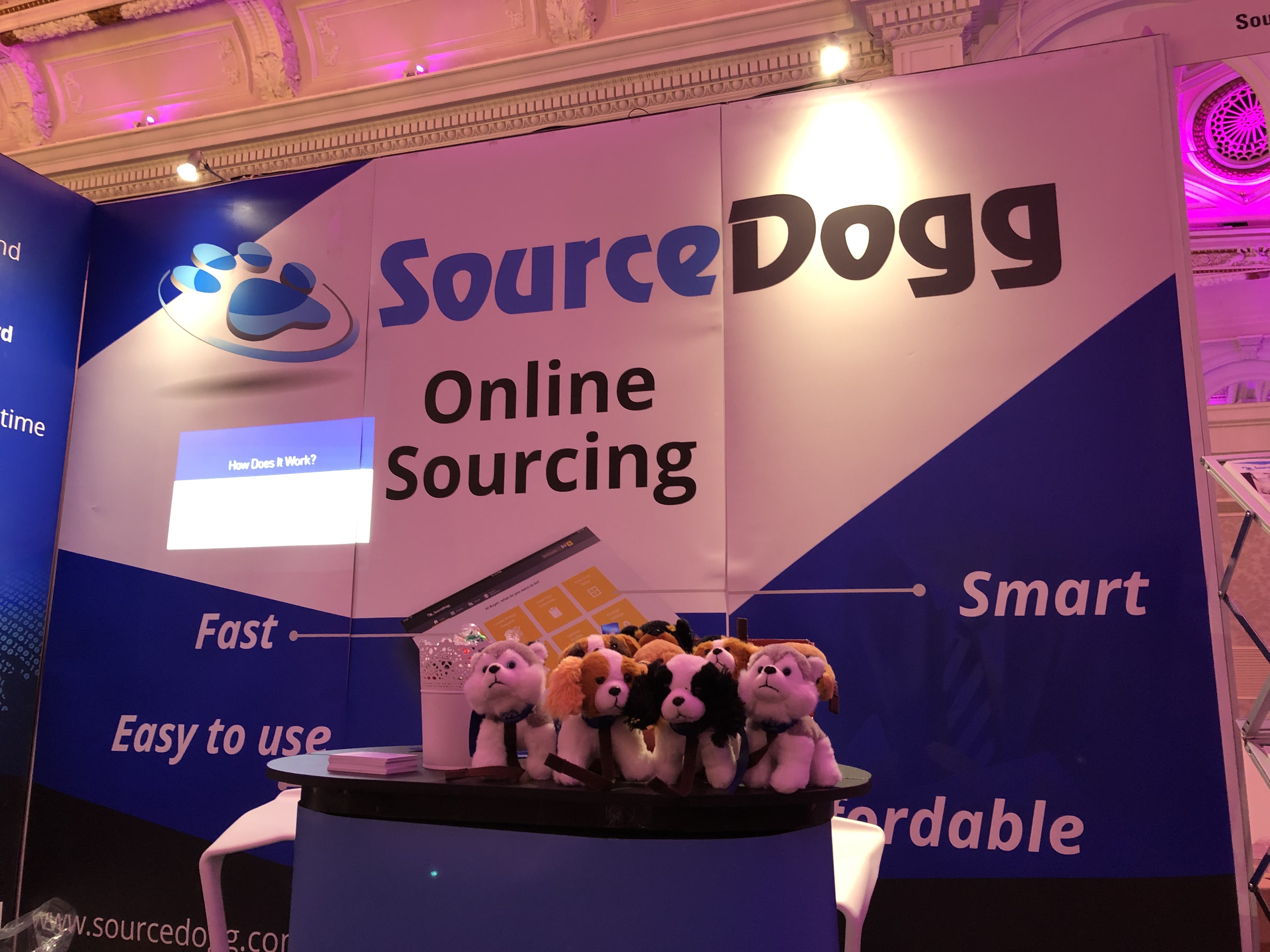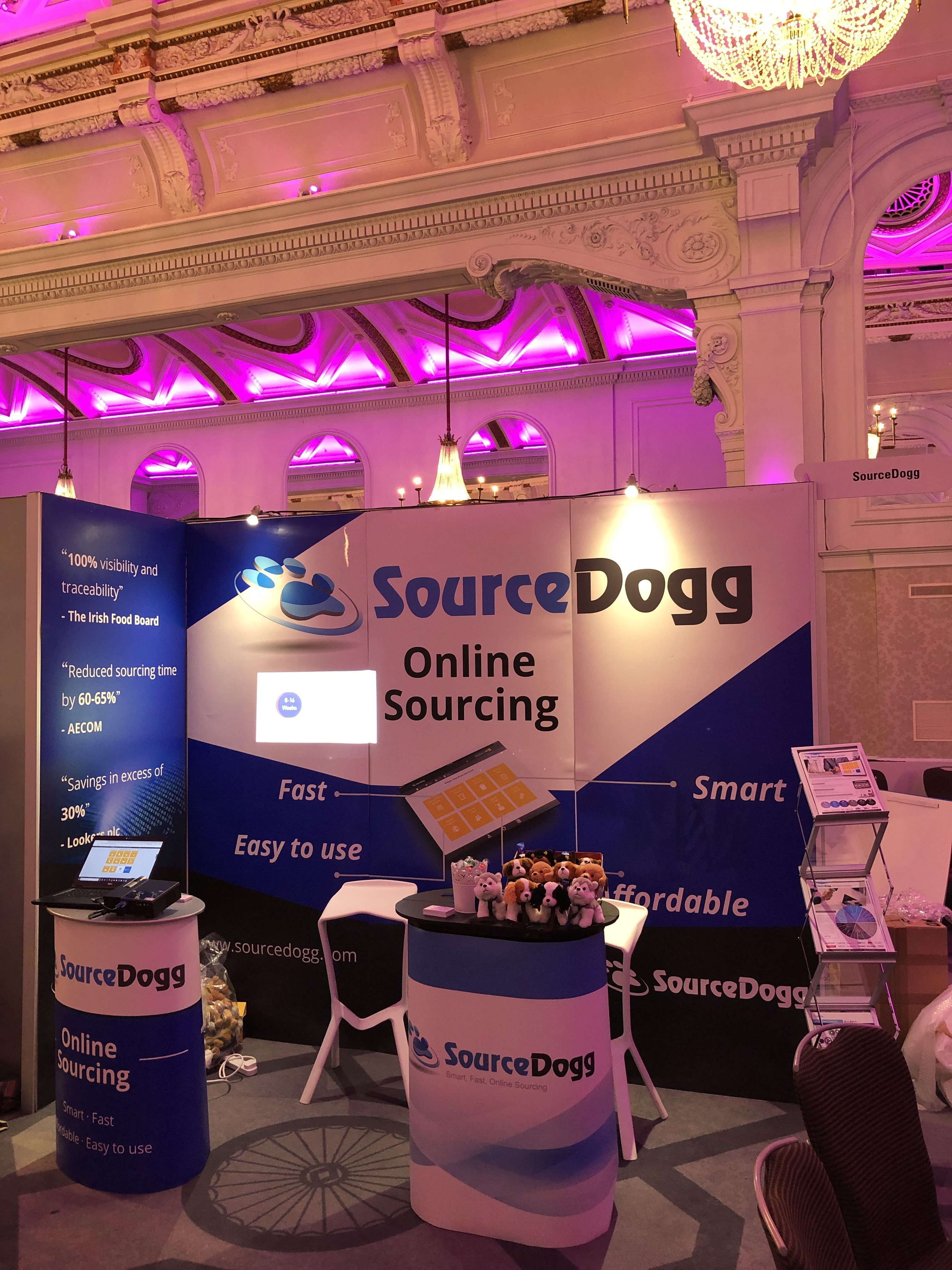Invest in Africa, Equity Bank and SourceDogg announce Partnership to introduce Ethical and transparent procurement solution in Kenya with Heather Humphreys, Minister for Business, Enterprise and Innovation.
We are exhibiting at eWorld September 2019
De Vere Grand Connaught Rooms, 61-65 Great Queen Street

New venue and all set for a busy day!
Simple and easy-to-use
All set for the CIPS Annual Conference
SourceDogg Sponsor The CIPS Annual Conference 2017
All set for another busy day at eWorld!
Strategies to Reduce Cost of Procurement and Purchasing
For every business in every sector, keeping costs down is vital.
Of course, there’s a big difference between making smart financial decisions and cutting corners: one should be encouraged, the other should not.
Why? Because while cutting corners may well result in your company saving money, the goods or services you invest in could be completely unsuitable. A low-cost, low-quality option may also involve compromising on certain ethical standpoints (such as sourcing from uncertified suppliers).
Paying for high-quality solutions provided by reputable, legitimate providers tends to incur a higher price – while bringing greater results and, consequently, peace of mind.
However, you can have the best of both worlds: with the proper procurement process in place, companies of all sizes, on all budgets, can source exactly what they need from the right suppliers in a cost-effective way.
The bottom line: you’ll save money without affecting the quality of the products – or the quality your brand is known for.
Here are three expert strategies to reduce costs in procurement and purchasing …
Be Bold – Negotiate!
Hosting negotiations with a supplier is rarely a process buyer look forward to. However, if you want your business to save money, you must be willing to discuss pricing with your suppliers to ensure maximum cost-efficiency and transparency.
Depending on the supplier you currently employ, negotiations may be smooth, pleasant, and mutually-beneficial: if you can settle on a suitable cost, your satisfaction will guarantee the supplier retains your custom.
It’s vital to consider how essential a specific supplier is to your product or services production cycle. Does one supplier provide you with an indispensable tool or material that you couldn’t go without, or would you be able to find it elsewhere for the same price (if not less)?
Obviously, if the supplier is (to coin a phrase) the only game in town, you may need to tread carefully when approaching the negotiation table. However, don’t automatically assume that you need them more than they need you: your business could well be their main source of income. In which case, it would behoove both parties to find a comfortable middle ground.
Do your research ahead of time: look into the average value of any and all materials provided by the supplier, and know your figures before any negotiations begin.
Question Value VS Brand Names
As a consumer, it’s easy to become blinded by a brand – products purchased by one big-name company may well pale in close comparison to cheaper alternatives, but you feel safer (and more fashionable) buying into the name.
The same applies to businesses sourcing goods from the most popular suppliers. They may have decades of experience, have millions upon millions of sales under their belt … but are they still the very best option? More importantly, are their products worthy of the higher price tags?
The best procurement process means weighing up all of your options based on numerous factors, with two of the most critical being cost and quality. For example, employees within your company may well refer to goods by the brand’s name if said manufacturer is synonymous with them because this is easier than providing the direct specifications. For example, to put it simply, saying ‘we need a BRAND X’ rather than ‘we need an engine featuring this, this, and that’.
This could be a costly mistake, though, as more cost-effective alternatives may well be available. Reaping this benefit might involve changing from one particular specification: if your company is used to a particular product being made with steel, an alternative material (plastic, for example) could offer the same results but at a lower cost.
Other aspects, such as the location and delivery processes, may affect the overall cost of using a particular supplier. It’s important to do the research and weigh up the potential benefits of trading up for a more competitive brand.
Buying Only What You Need
It’s tempting to buy goods in bulk, to prepare for the inevitable rush: customers will buy by the dozen, your stock will sell out, and you’ll make a tidy profit.
It’s a nice idea. Sadly, though, it may not actually turn out this way.
Keeping products in stock will take up valuable space in your warehouse, preventing you investing in other (perhaps more high-demand) goods, and ultimately serving as a waste of money.
It’s best to buy products in an appropriate amount, investing in a more realistic quantity rather than purchasing the absolute maximum you can afford. If your research and data show that there’s unprecedented demand out there, by all means, buy with this in mind – but you have to be sure.
Consider the potential loss you may incur by buying excessive stock and keeping it in storage ahead of time. If you can only buy in high quantities, endeavor to strike a deal with your supplier – it may be worth more to them to offer a reduction to retain your custom.
Apply these three strategies to reduce costs and streamline your procurement process. Not only will your finances go further, you’ll ensure you’re working with the very best brands for your demand and budget.
5 Trends Affecting Procurement Professionals
5 Trends Affecting Procurement Professionals
Changes in working practices and processes affect specialists in all sectors, and procurement is no different. Emerging trends transform procurement considerably, altering the way in which you work.
As a procurement professional, you know you have to stay on top of the latest trends to avoid falling behind. With that in mind, what are the latest trends, and how do they impact today’s procurement professionals?
AI Paves the Way Forward
AI is becoming bigger and bigger in even the smallest areas of life, and procurement professionals will see this expand in their sector. Businesses will embrace big data and AI to maximize their processes and keep supply chains running as smoothly as possible.
Businesses, customers, and suppliers expect results with a minimum of delay. Machine-learning algorithms will continually enable businesses to cut out mundane administrative tasks and streamline their processes, freeing their teams up to focus on other areas.
Greater Emphasis on Globalisation
As the internet keeps making the world smaller, globalisation is consistently easier (and more financially-viable).
Companies will be encouraged to consider sourcing products from around the world rather than exclusively local suppliers; while shipment carries a cost, the base manufacture of various products varies.
Businesses may save money by investing in suppliers with lower production costs and smaller overheads, even when taking international shipping into account. Product-manufacturers based in less-developed regions will benefit from globalised procurement too, as their lower rates can provide greater value than bigger, more expensive companies.
Cloud-based software makes managing global transportation and communications easier than ever. Brands can upload delivery data on the fly, monitor shipments, collaborate on documents, and much more wherever they’re based.
A More Transparent Service
For businesses, social media has transformed customer service and accountability forever. While companies may one day have avoided individual demands for explanations or complaints, today this is impossible on social channels: other users can see when criticisms are made when questions are asked, and more.
For any business to let these go unanswered or unresolved is a big mistake, as potentially thousands (or millions) of other prospects will see it.
With this in mind, procurement processes will continue to alter in an age where transparency is in greater demand: professionals can check potential suppliers’ social feeds for an idea of their ethics, their dedication to customers, and target demographic.
The Millennial Mindset
Millennials will continue to be a major presence in the workforce, and they will bring a new approach to procurement.
Millennials are well-informed on sustainability, the economy, and the ethics of business. It’s easier for information on businesses’ supply choices and investments to leak than ever, and if customers and affiliates discover an unethical organisation or brand has been involved in the supply chain, it can have a significant negative impact.
Millennials’ awareness of the importance of sustainability, fair trade, and social issues will bring a valuable fresh mindset to the procurement sector. As a result, organisations will face less risk of becoming involved with questionable businesses or attracting negative attention through poor choices.
Planning Around Demand
In the past, procurement may have been more focused on planning around a supplier’s production capacity and ability to distribute in a timely manner. Now, though, there’s a greater emphasis on the consumer at the end of the supply chain.
As a result, planning and purchasing look more closely at demand and purchasing with this in mind (rather than investing in far more products than needed). Costs can, therefore, be reduced, and supply can be met in a streamlined way without products bought in bulk sitting in a warehouse somewhere.






